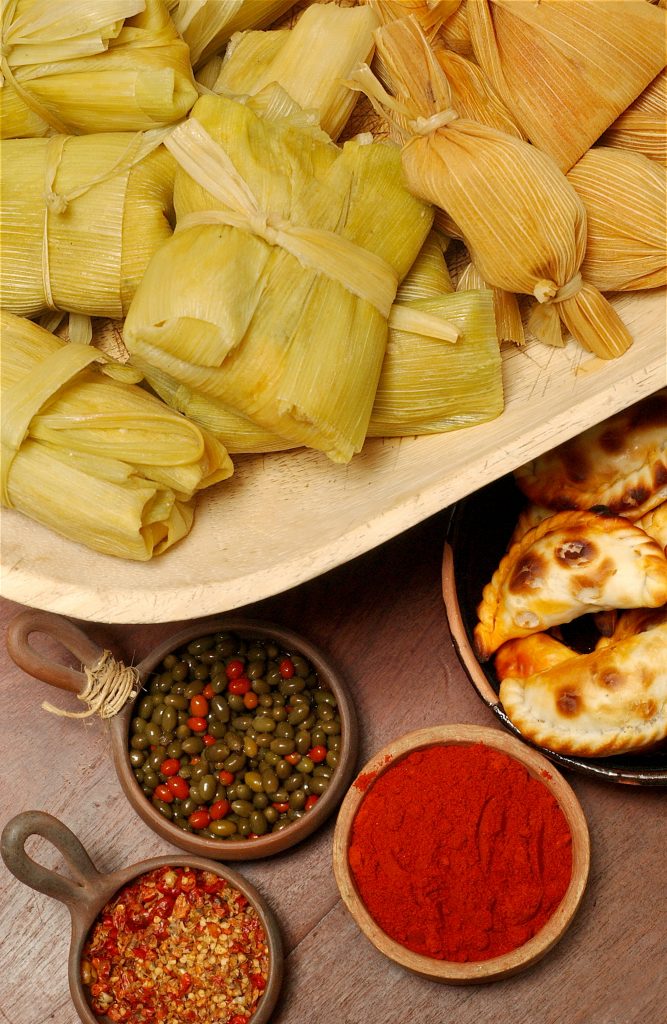Depending on the occasion, Argentines have their favourite dishes. For a celebration, it’s always asado; for an informal get together, pizza or empanadas; for a family Sunday lunch, filled pasta. And so, whether by occasion, meetings or pure gluttony, we tie a napkin around our necks and tuck in to our typical dishes while we pour some classic wines into our glasses.
One imagines that this local cuisine is no different than the rest of the world. Perhaps, it has its particularity in the fact that the everyday meals and parties are very different, but in any case, one thing is certain: if you eat well, there will always be a bottle of good wine on the table to ease the passage of every bite. But which wines are chosen in each case?
There are a handful of options that any Argentine would not fail to point out. And below we have listed these gastronomic pairings to guarantee a culinary journey.
Asado and red wine. If there is a dish that feeds the Argentine imagination of abundance,
it is the asado. You can read more about that here; https://blog.winesofargentina.com/es/the-asado-bbq-an-argentine-experience-to-savour-with-red-wine/. There are rules. However, no Argentine ever thinks of a roaring grill with ribs and skirt steak which doesn´t involve a glass of red wine. Of course, in our country there are many reds.
With a full-bodied Malbec or a Cabernet Sauvignon with good freshness and a touch of oak which highlights the volume of red in the mouth and rinses the palate for the next bite. Reserva and Gran Reserva wines are the ideal partner of any asado.
If the asado also has sweetbreads and melted provolone cheese with olive oil and spices, you can go for a sparkling white, like a high altitude Chardonnay.
Moscato and pizza. In the pizzerias in Buenos Aires, where the counters are made of tin and where they dish out the classic fluffy dough mozzarella pizza with tomato sauce and plenty of cheese — there is also room for wine. Not just any wine, but for a fortified white wine, similar to Italian Moscato, poured to the top of the glass with some ice and a soda to lighten. Of course, a fortified wine needs a very flavourful pizza and nothing is better than fugazzeta: a sort of pizza stuffed with onion and mozzarella cheese au gratin with aromatic oregano. A classic of the 1950s, this wine is booming due to the growth of aperitifs in Argentina. And it is a must for anyone who wants to delve into the Porteño
pizza.
Picada with red wine. When watching the national team or a favourite local side or simply at a weekend get-together, Argentinians like to liven things up with a picada. A sort of national tapas, it consists of a table overflowing with bite-size snacks: from rustic sausages to cheeses, from ham to pickles to milanesitas with cheese and marinated olives which are placed on the table for guests to serve themselves. And, as well as this ritual, it is expected that each person brings a bottle of wine, usually red, but it can also be a white. In any case, they are younger, simpler wines, with the reserva or gran reserva being left at home for other meals.
Pasta with red wine. In the local gastronomy, there is no Sunday without pasta. And, unlike the rest of the world, in Argentina there is fresh pasta to be found everywhere. That is, houses that offer ravioli, lasagne and cannelloni, prepared with the freshest ingredients, during the day and usually in view of the customer. There is no neighbourhood or town that does not have one.
And with all the family together, there is not nothing like a good meal of pasta, accompanied by red wine. Malbec, Cabernet Sauvignon or Merlot, the varietal is not so important as long as it’s juicy and fruity, like most local reds. Bonarda, although not as well known as the others, is an ideal choice. In any case, the reds from the Calchaquí Valley, in the North are generally avoided due to their potency.
Sparkling wines with dessert. To be honest, Argentines are not accustomed to having sparkling wines with food. But that is changing. What is more common is to have a good Extra Brut with the sweet trolley. In fact, in the local calendar of celebrations, whether for a birthday, anniversary or an impromptu celebration, a bottle of sparkling will normally arrive straight after a meal, accompanied by ice cream, flan with dulce de leche or, -more sophisticated – a ricotta cake or lemon pie. Or a late summer afternoon, next to the pool, with puddings and sponge cakes. It is at this point that the glasses are filled with bubbly, mostly dry, but the sweet ones are a growing sign of the times.
Late harvest wines with cheese. Sweet white wines, whether late or natural, are a trend in the Argentine market. And although at the beginning, when the shelves were full of them in the mid-2000s, they were as popular as dessert wines, with time they gained a place alongside the most classic of classic Argentine desserts: good quince or sweet potato with medium-hard cheeses such as gouda, fymbo or lincoln. Known as the “vigilante” it is a perfect contrast between sweet and savoury and is best suited to the sweetness and freshness of a late harvest.
Locro and white wine. When Argentines celebrate a national holiday, the days when we commemorate the Declaration of Independence on July 9 or the Revolution on 25 May, they eat locro.
Creole food with indigenous roots, locro is a thick stew that of corn, beans and squash with cuts of meat and pork which is then cooked for many hours and is very thick. This dish is, in general, served with a glass of Torrontes,particularly from the northwest, as fresh, aromatic whites make the dish a little lighter. However, a fruity, young red is always accepted, but is not the first choice.
With this guide to Argentine pairings, any visitor can drop into a restaurant and order without trepidation of the local cuisine. You’ll know what to order and what to drink with it! And like this, something of the culinary landscapes of Argentina is carried with you, which is, incidentally, a real way to travel.



